
views
Find a calm area to start.
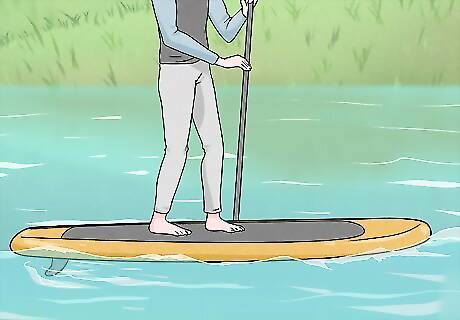
Start out in laid-back waters where you won’t be in harm’s way. Finding calm wind is not necessary but always a good idea for your first hours on a board. If you are ‘launching’ your board off of a beach you can easily be swept down the beach and if enough wind is blowing you will see your board can act like a sail. Seek calm water as well; waves make it much more difficult to balance. Comfort is key for first timers! We love launching new paddle boarders into a lazy, well protected river where they can easily make shore if need be.
Get on your stomach.
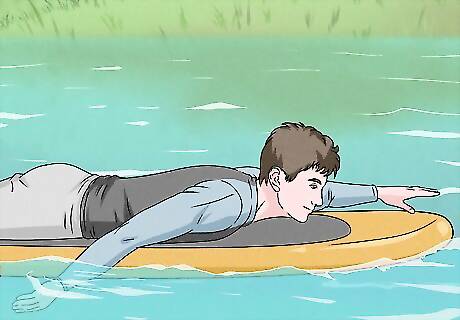
Hop on the paddle board face-down and practice kayak paddling. Prone paddling can be used to get further away from the shore and into deeper water. To do so, lie down on the board and lie the paddle vertically along the board with the blade under your chest so it doesn't float away. With one arm on either side of the board, paddle as if you are swimming.
Move up to your knees.

Push yourself a little further by paddling on your knees. Carefully sit up and position yourself on your knees. Make sure to hold on to your paddle so it doesn't float away. You want to remain in the center of the board so the nose and tail stay level with the water.
Focus on your grip.
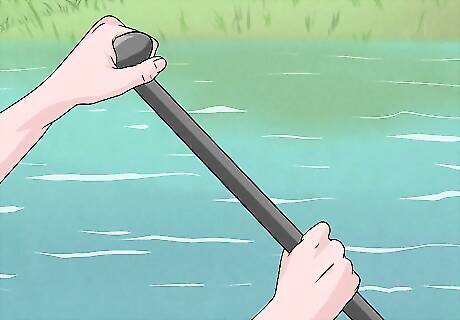
Holding the paddle correctly is a big part of paddle boarding. Holding a paddle board paddle is similar to how you would hold a canoe paddle. Place one hand on the T Bar grip at the top of the shaft and the other hand slightly past the middle, closer to the blade. You can switch hands as needed to paddle on both sides to keep the board straight. Make sure the paddle is facing the right way! The angle of the blade should be facing away from you- this will eliminate drag.
Practice your stroke.
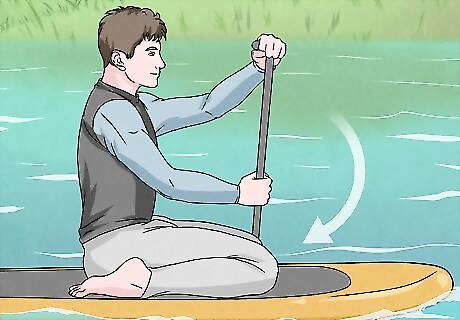
Use the correct mechanics to paddle your board. Adjust the paddle to the proper height, which is about 8" overhead. Keep your arms relatively straight to get a wider range of motion. You will be using a lot of core strength, more so than your arms. Paddle using a down and back motion, dipping the paddle in the water at the front side of your board and pushing it towards the back side. Switch sides every few paddles to remain straight.
Get on your feet.

Once you’re comfortable on your knees, try standing up. Place the paddle horizontally across the front of your board and place your feet in the center where your knees once were. You should be in a squatting position. Slowly stand up while holding on to your paddle. Keep your knees bent and your feet about shoulder width apart. Your feet should be parallel to each other. One foot in front of the other may make it more difficult to balance.
Get used to turning.
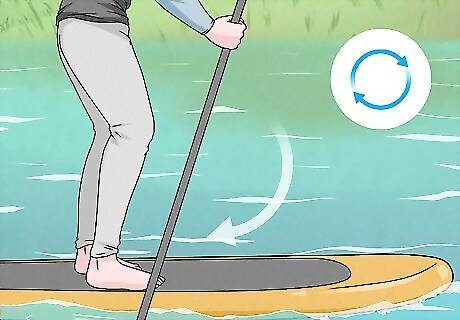
Turn by paddling on one side of the board. Paddle on one side of the board without switching sides until you are facing the direction you want to go. You will turn the opposite direction of the side you are paddling on.
Learn how to back paddle.

Going in reverse comes in handy when it comes to making quick moves. Back paddling can be used to take smaller, quicker turns. Move the paddle from back to front. Dip your paddle in the water behind you, rather than in front of you, and push it forward.
Master the stop.
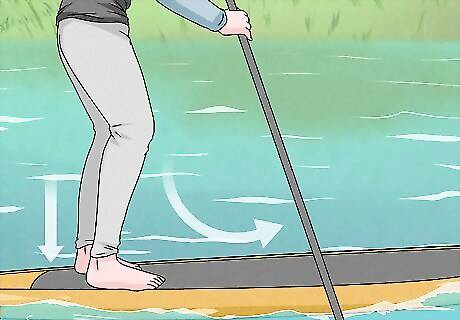
Stopping your board is an advanced move, so practice it last. Back paddle just a few times to get your board to slow down. Continuing to back paddle will cause your board to turn. A more advanced method of stopping is to step back on the tail of the board to sink it under water.



















Comments
0 comment